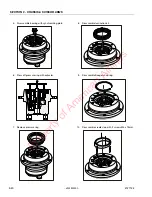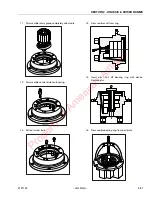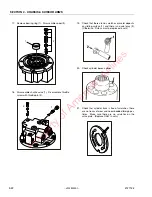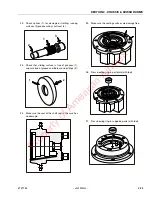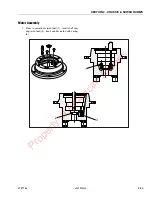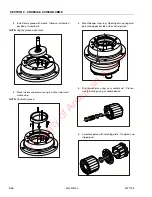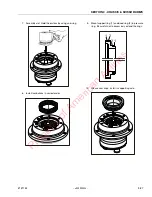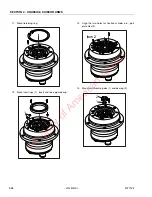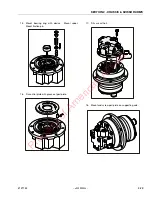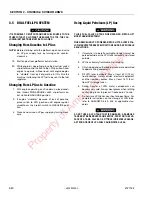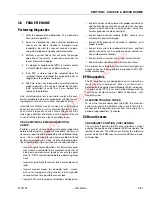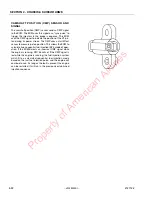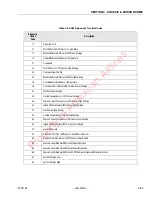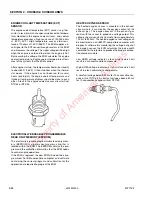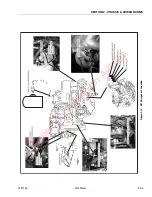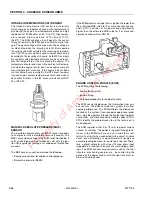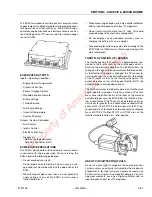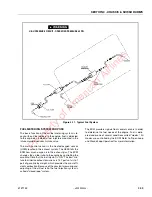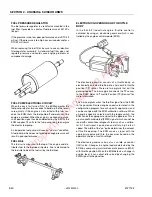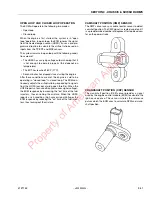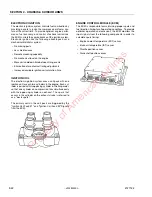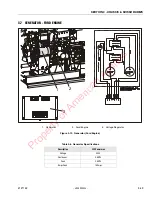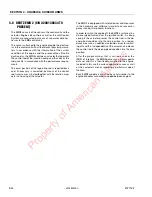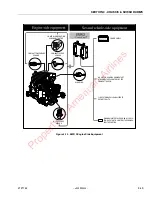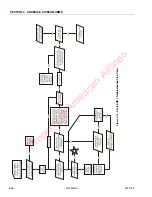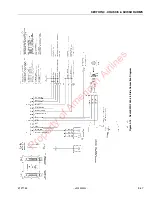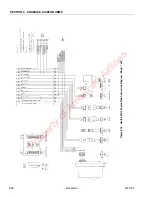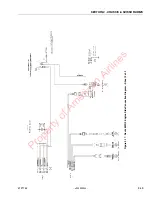
SECTION 3 - CHASSIS & SCISSOR ARMS
3-34
– JLG Sizzor –
3121133
ENGINE COOLANT TEMPERATURE (ECT)
SENSOR
The engine coolant temperature (ECT) sensor is a g ther-
mistor (a resistor which changes value based on tempera-
ture) mounted in the engine coolant stream. Low coolant
temperature produces a high resistance of 100,000 ohms
at -40°C (-40°F). High temperature causes a low resis-
tance of 70 ohms at 130°C (266°F). The ECM supplies a 5-
volt signal to the ECT sensor through resistors in the ECM
and measures the voltage. The signal voltage will be high
when the engine is cold and low when the engine is hot.
By measuring the voltage, the ECM calculates the engine
coolant temperature. Engine coolant temperature affects
most of the systems that the ECM controls.
After engine start-up, the temperature should rise steadily
to about 85°C (185°F). it then stabilizes when the thermo-
stat opens. If the engine has not been run for several
hours (overnight), the engine coolant temperature and
intake air temperature displays should be close to each
other. A fault in the engine coolant sensor circuit will set
DTC 33 or DTC 43.
ELECTRICALLY ERASABLE PROGRAMMABLE
READ ONLY MEMORY (EEPROM)
The electrically erasable programmable read only mem-
ory (EEPROM) is a permanent memory chip that is
located within the ECM. The EEPROM contains the pro-
gram and the calibration information that the ECM needs
to control engine operations.
If the ECM is replaced, the new ECM will need to be pro-
grammed. An IBM-compatible computer and software
containing the correct program and calibration for the
application are required to program the ECM.
HEATED OXYGEN SENSOR
The heated oxygen sensor is mounted in the exhaust
stream where it can monitor the oxygen content of the
exhaust gas. The oxygen present in the exhaust gas
reacts with the sensor to produce a voltage output. This
voltage should constantly fluctuate from approximately
100 mV to 900 mV. The heated oxygen sensor voltage can
be monitored on an IBM PC-compatible computer with
diagnostic software. By monitoring the voltage out-put of
the oxygen sensor, the ECM calculates the pulse width
command for the injectors to produce the proper combus-
tion chamber mixture.
Low HO2S voltage indicates a lean mixture which will
result in a rich command to compensate.
High HO2S voltage indicates a rich mixture which will
result in a lean command to compensate.
A constant voltage below 200 mV for 10 consecutive sec-
onds will set OTC 32. A constant voltage above 650 mV
for 10 consecutive seconds will set OTC 42.
Property of American Airlines

